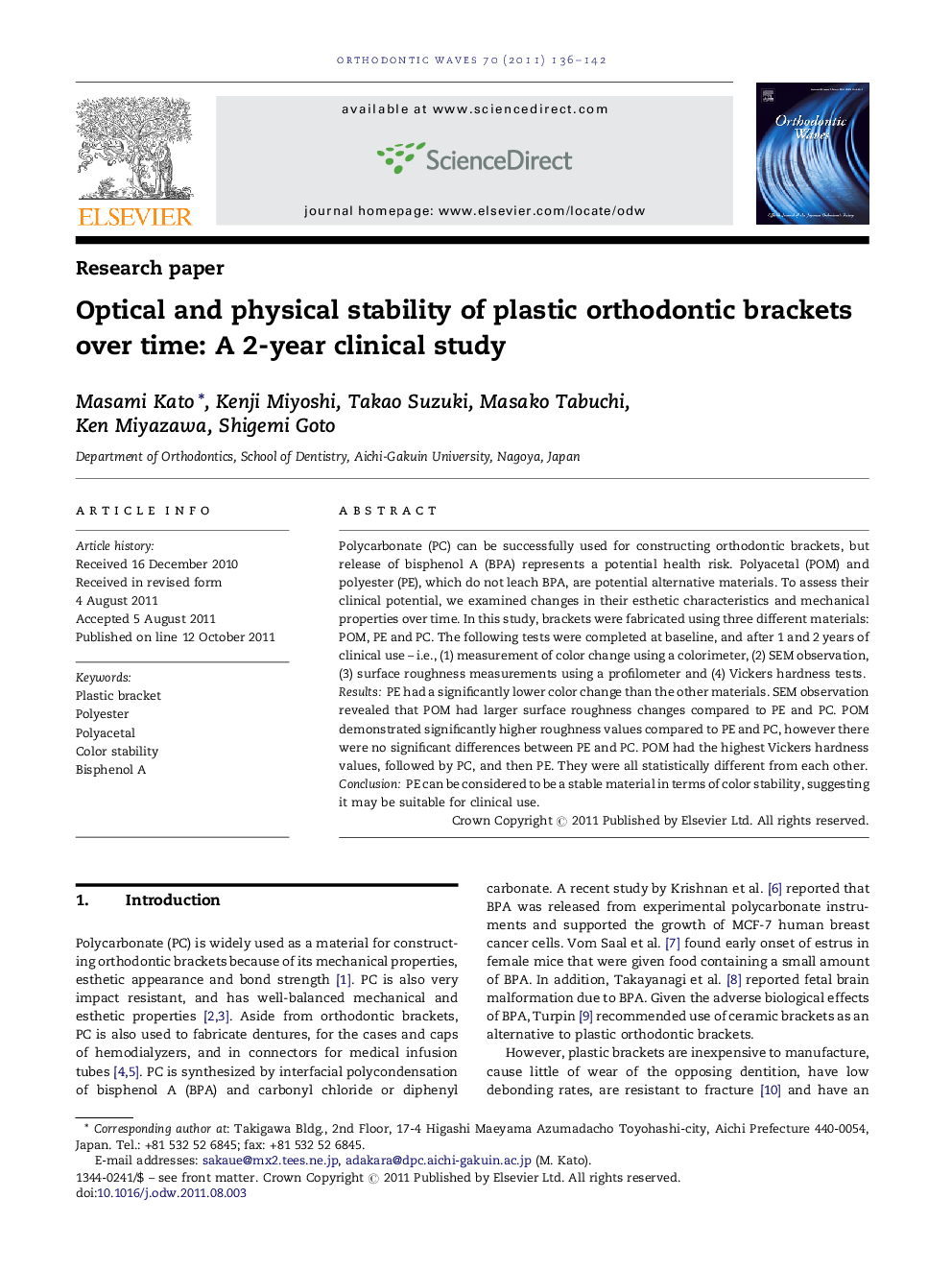| Article ID | Journal | Published Year | Pages | File Type |
|---|---|---|---|---|
| 3170425 | Orthodontic Waves | 2011 | 7 Pages |
Polycarbonate (PC) can be successfully used for constructing orthodontic brackets, but release of bisphenol A (BPA) represents a potential health risk. Polyacetal (POM) and polyester (PE), which do not leach BPA, are potential alternative materials. To assess their clinical potential, we examined changes in their esthetic characteristics and mechanical properties over time. In this study, brackets were fabricated using three different materials: POM, PE and PC. The following tests were completed at baseline, and after 1 and 2 years of clinical use – i.e., (1) measurement of color change using a colorimeter, (2) SEM observation, (3) surface roughness measurements using a profilometer and (4) Vickers hardness tests.ResultsPE had a significantly lower color change than the other materials. SEM observation revealed that POM had larger surface roughness changes compared to PE and PC. POM demonstrated significantly higher roughness values compared to PE and PC, however there were no significant differences between PE and PC. POM had the highest Vickers hardness values, followed by PC, and then PE. They were all statistically different from each other.ConclusionPE can be considered to be a stable material in terms of color stability, suggesting it may be suitable for clinical use.
